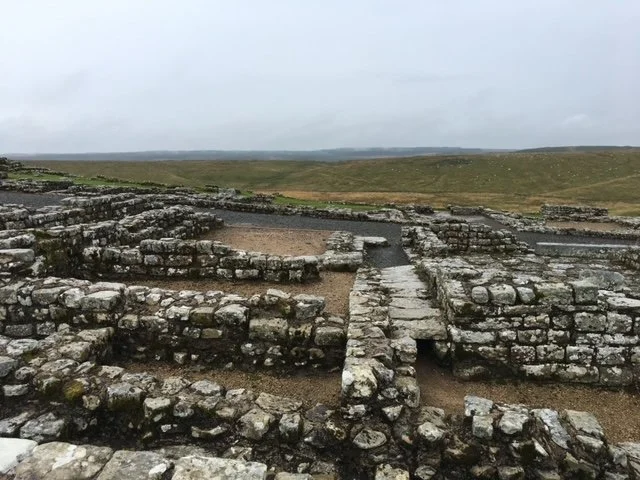Caerleon
Caerleon is a town in Wales, found on the River Usk. The Romans established a legionary fortress here, which they called Isca, around AD 75, choosing the site because it was strategically located within enemy territory, yet close enough to the River Usk for access by sea. It became a permanent base for the Second Augustan Legion. Life could be hard for a Roman legionary as he was either confined to barracks, training or skirmishing with the local Britons.
In Caerleon, the legionaries benefitted from the fact that there were baths and an amphitheatre to help keep them entertained. Visitors to modern day Caerleon can still explore these places and get a glimpse of what life was like in the past. When my son was little, this was a favourite place to visit. Since then, the baths have updated and brought to life with a mixture of digital projections, lighting and audio visual presentations, making them a far more atmospheric experience.
As you enter the building, you walk along the edge of the natatio or open-air swimming pool. Words form on the surface of the water and a Roman soldier dives into its depths and you can hear the muttering of voices, dripping water and the splashing of swimming as you walk around. There are plenty of things to notice, including the print of a studded sandal, a dog’s paw and a cat’s paw all frozen in time in the tiles at the edge of the pool.
Around the edges of the pool and other areas of the baths, there are plenty of information boards and other exhibits, offering plenty of additional information about life in Roman Wales. Having thoroughly enjoyed my visit here, I wandered through the town to the National Roman Legion Museum. This also sparks fond memories of my son and his friends dressing up as Roman soldiers, waving shields and swords around!
The museum boasts more Roman legionary remains than anywhere else in Britain and is well worth spending time in. One of the finest hoards of silver coins from second century Roman Britain can be seen as well as many tokens of everyday life, showing how many similarities there are between us and those in the past!
A barrack room shows how the soldiers would have lived when not on duty and there is even a Roman inspired garden, planted with herbs and flowers used in food and medicine by those living in Caerleon at this time. The presence of a very friendly black cat made this part of the visit even more enjoyable!
Just outside the town centre are the amphitheatre and the barrack block. Built around AD 90, the amphitheatre was a place of entertainment for the legionaries based here. Long after the Romans left, Geoffrey of Monmouth wrote his ‘History of the Kings of Britain’ and claimed that King Arthur was crowned in Caerleon and that the ruined amphitheatre was actually the remains of his Round Table.
Thee barracks are laid out in parallel lines. Twelve pairs of small rooms for the legionaries are connected to a larger block at the end for the centurion and his staff. Eight men shared a pair of rooms, with the smaller used for storing kit and the larger for sleeping.
Caerleon is a great place to wander around, wondering about the past!
Caerleon Roman Fortress and Baths/ The National Roman Legion Museum
High St,
Caerleon,
Newport
NP18 1AE
You can read about Houseteads Roman Fort here.

















